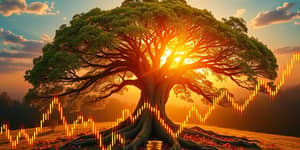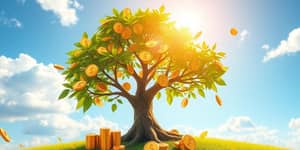
In an era of rapid environmental change and evolving market dynamics, securing lasting financial growth requires more than traditional approaches. Investors are increasingly recognizing that aligning their portfolios with sustainable principles not only delivers competitive returns but also contributes to global well-being. As the sustainable finance sector is expanding rapidly, it’s vital to understand the core themes, data-driven frameworks, and practical steps that can guide your investments to thrive in 2025 and beyond.
The sustainable landscape is shaped by multiple interlocking themes. Recognizing these directions helps investors align capital with high-impact opportunities while capturing market growth.
These themes are not siloed; successful strategies often weave together multiple focus areas to build resilience and capture diversified growth.
Implementing a sustainable approach demands disciplined construction techniques. Integrating diverse asset classes and balancing risk-return profiles fosters robust performance across market cycles.
Regularly reviewing these benchmarks ensures your portfolio remains aligned with evolving market realities.
High-quality, actionable data is the backbone of sustainable investing. Without robust information, portfolios can carry hidden risks or miss emerging opportunities.
Investors should emphasize materiality and risk assessment for investments, focusing on climate, regulatory, and social factors that materially impact financial performance. Conducting thorough life cycle assessment supports smart decisions by evaluating environmental footprints from production to disposal. Platforms offering enhanced transparency in impact measurement grows stronger each year, empowering investors to compare, contrast, and select investments with demonstrated outcomes.
Despite robust growth, the sustainable finance landscape faces scrutiny and evolving regulations. Skeptics question the integration of ESG factors, while regulators tighten disclosure requirements across regions.
Key trends and challenges include:
Staying ahead of these shifts ensures your strategy remains credible, compliant, and aligned with best practices.
Turning insights into action requires concrete steps. Below are practical recommendations to embed sustainable growth into your investment plan:
By combining dual imperatives of financial return with environmental and social impact, investors can build portfolios designed to last through shifting market conditions. Embracing these sustainable growth strategies today sets the foundation for lasting wealth, resilient economic systems, and a healthier planet.
References













